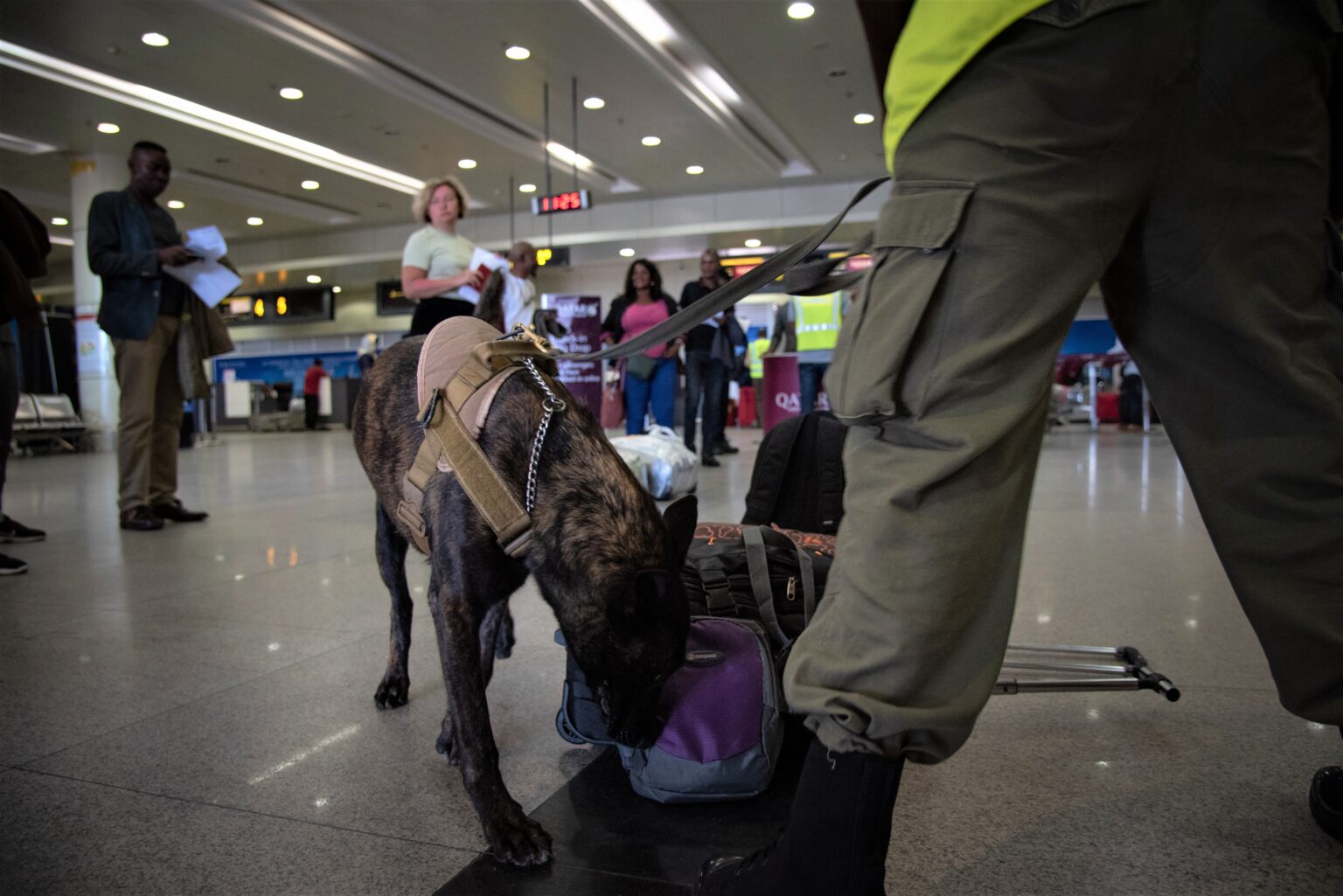
On Thursday 23 February, Vietnamese national Tran Trang was sentenced by the Maputo City Law Court to 16 years imprisonment for trafficking a staggering amount of wildlife products: 5 rhino horns, 127 lion claws and 36 lion teeth.
There are crucial moments when the battle to dismantle the aggressive world of the illegal wildlife trade comes right. These breakthroughs are never simply by chance – they point to monumental efforts to combat these crimes. Powerful teamwork and intense preparation had made the seizure on 9 November 2020 possible when Sasa, one of the detection dogs stationed in Maputo Airport, sniffed out the illegal cargo.
This story had a long history, beginning in 2018 with a collaboration which would change the nature of the criminal game at Mozambique’s international airport. A former hotspot for routing illegal wildlife products to the worldwide market, it appears now to be losing its infamous status. Maputo has gone from being the second most important airport acting as a conduit for illegal products to an officially ‘insignificant’ one. This shift has coincided with the deployment of Sasa and friends, the stars of the airport’s dog unit, and is an impact to feel optimistic about.
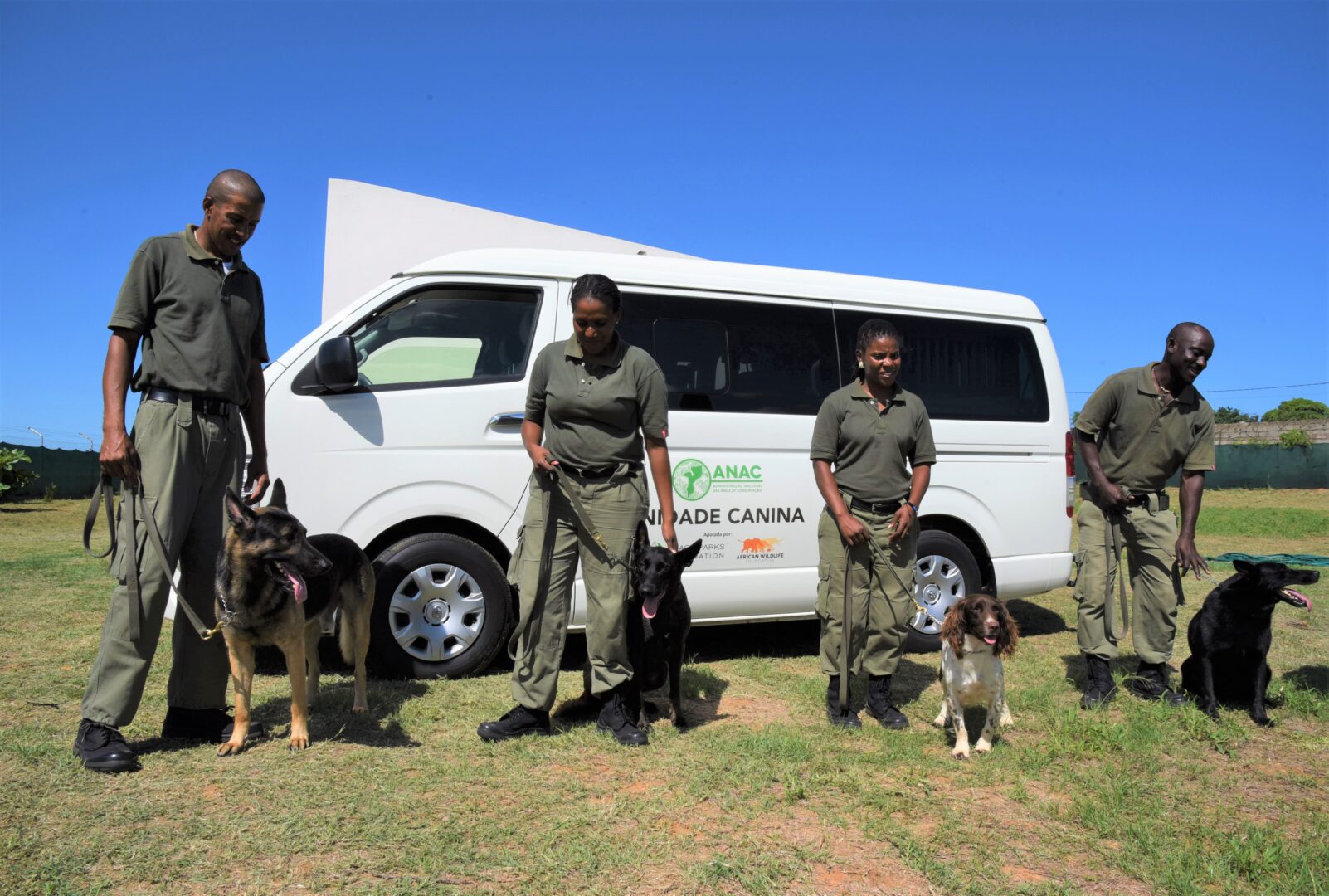
A glimpse into the underworld
Prior to this progress, with the dire state of trafficking across landscapes and borders and the need for environmental protection through international collaboration, Peace Parks and the African Wildlife Foundation came together to found the K9 detection unit, in partnership with Mozambique’s National Administration for Conservation Areas (ANAC).
On that November day two years on from the unit’s inception, Sasa was the sniffer dog on duty. As she helped conduct a random search of all passengers boarding flights, she zeroed in on Trang’s sizable stash. It was a ‘spot bust’, the chances of which would be dramatically reduced without a highly trained canine nose to pick up the scent. The woman in possession, with clear intent to smuggle the goods abroad, was arrested and her phone confiscated – revealing records which, over the following weeks, provided valuable leads. Further investigations led to the arrests of other suspects in Mozambique, deepening the impact of Sasa’s success.
The global machine that is the wildlife trade industry involves hundreds of millions of wild plants and animals from tens of thousands of species. While a great deal of this trade is legal and not harming wild populations, a worryingly large and increasing proportion is illegal. Over the past decade, wildlife crime has grown in both severity and profitability, and morphed into transnational organised crime of overwhelming scope and complexity. It now generates billions of dollars annually for syndicates, and affects the national security of many countries around the world. Not to mention the devastating effect on wildlife populations and plant species, and to biodiversity at large.
Overexploitation now poses the second-largest direct threat to many species after habitat loss, and the survival of those already living with endangered status is urgently threatened, making the severity of the wildlife crime epidemic catastrophic. Amidst this onslaught, dogs with a detection purpose are making an impact.
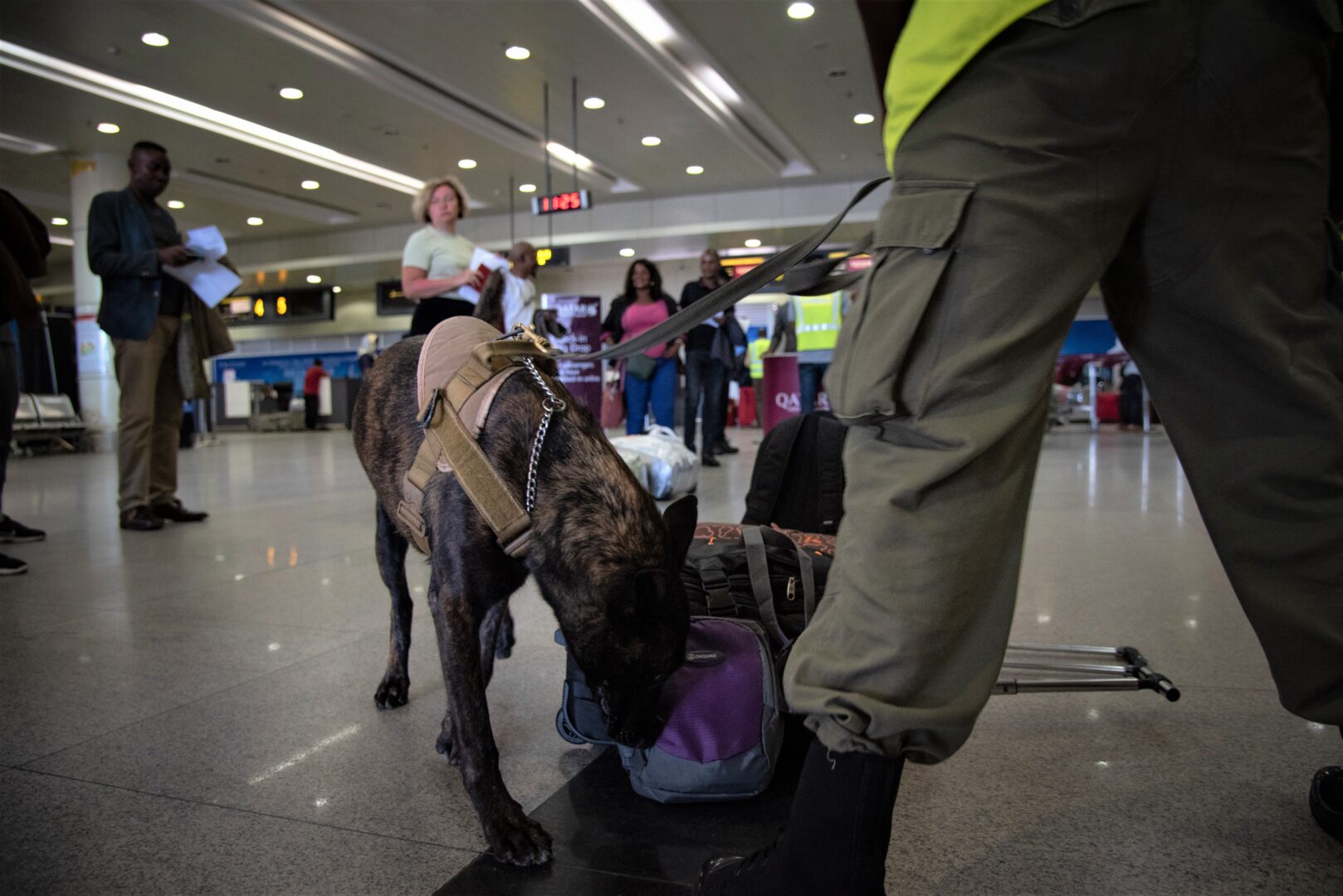
The power of teamwork
Teams of experienced law enforcement and conservation professionals, with the support and expertise of organisations, are increasingly united in disrupting syndicates. Spread across the many complex roles involved, there are clear commonalities: a passion for wildlife conservation and extensive experience in the field are just a few. The ability to build relationships, effectively share knowledge and provide frontline training for both humans and canines are essentials. So too are the skills needed to analyse and synthesise complex data – which can unlock the clues crucial to a big bust. Faced with ever-evolving rings of criminality, many counter-trafficking resources must join forces. Co-ordinated missions, combining specialist toolkits full of intelligence and field skills, can launch a more powerful assault on offenders.
Peace Parks Foundation is one of the biggest funders of combatting wildlife crime initiatives in Africa, responsible for the development and implementation of ground-breaking technology and policies that have saved countless lives: humans, and both animal and plant species. The organisation focuses on four interventions that are most likely to have long-term impact in countering poaching and trafficking.
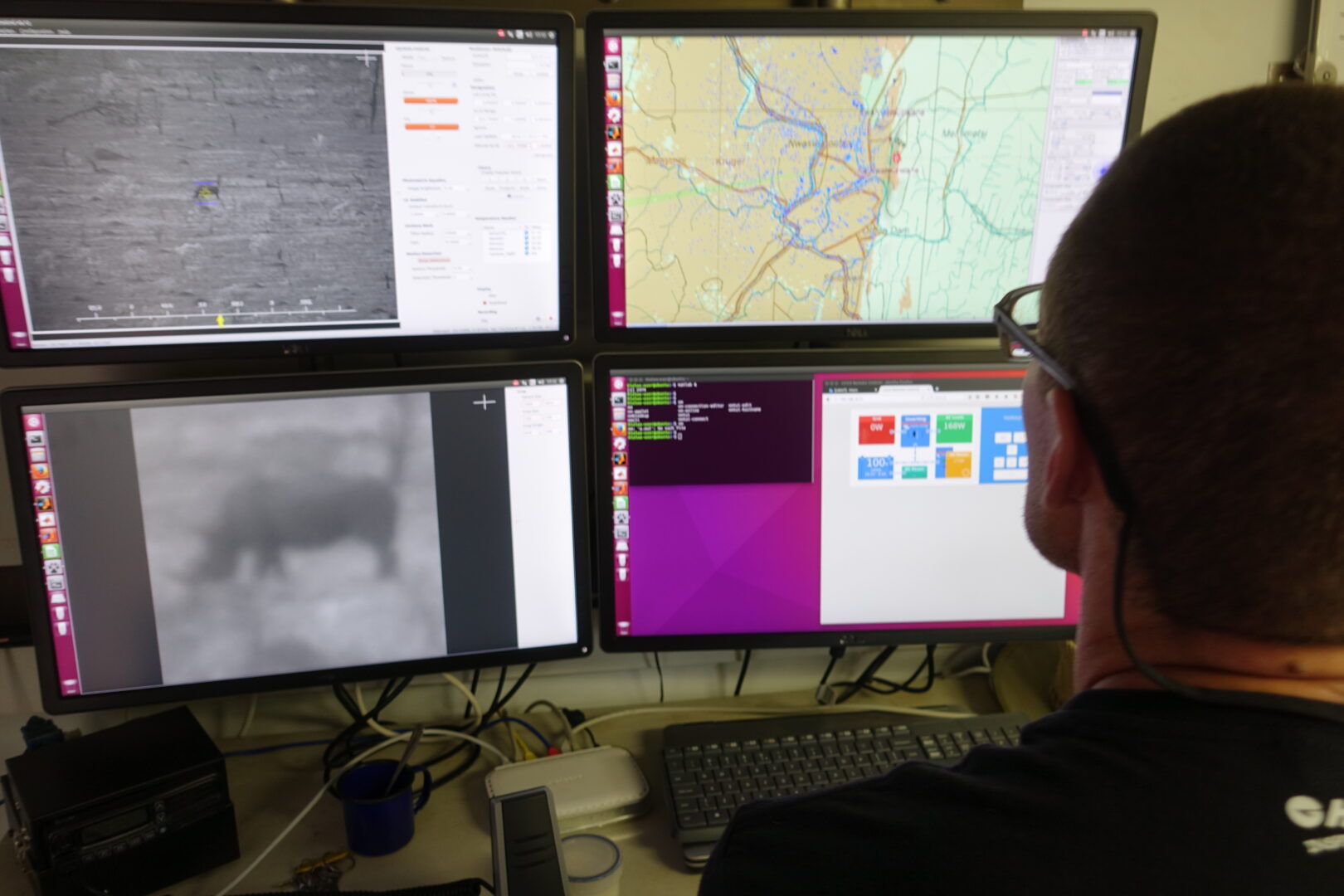
New generations of ‘SMART tech’ are bringing constant innovation to conservation, putting advanced hardware and software in place which act as a significant deterrent to poaching activities. Alongside, support of special wildlife crime investigations has had remarkable success, putting a collaborative spin on the traditional anti-poaching approach of boots on the ground. Education and awareness initiatives to bring about a change in behaviour over the longer term are aimed at reducing demand and elevating the overall level of understanding of conservation. People living in conservation landscapes play a central role in Peace Parks’ holistic approach to restoring balance, with continuity, to ecosystems and communities. They are being empowered either to benefit from the sustainable use and development of commercial resources within the protected areas, or be assisted to find alternative livelihoods to replace a dependence on poaching-derived incomes.
Paws on the pulse
To give context to the scale and severity of the syndicates at play, wildlife crime is often referred to as the ‘soft underbelly’ of the even more complex and extensive organised crime networks, which are dealing in drugs, weapons and humans. In this underworld, everything is connected; it is well-recognised that the linkages and overlaps between every trafficking chain are extensive. Illegal goods of all kinds slip into well-hidden channels which involve criminals of varying rank at every successive stage: a lethal case of ‘crime convergence’.
As the smartness of syndicates increases apace, the teams and tech geared to combatting wildlife crime must outpace them. The rapid advances are impressive, and K9 units are constantly trained to adapt to a change in criminal behaviour. The much-loved and invaluable dogs are astonishingly good at their jobs. In close collaboration with the Mozambican Police, the National Criminal Investigation Service (SERNIC) and Customs, the Maputo K9 Unit is literally changing the greater landscape of the trafficking map.
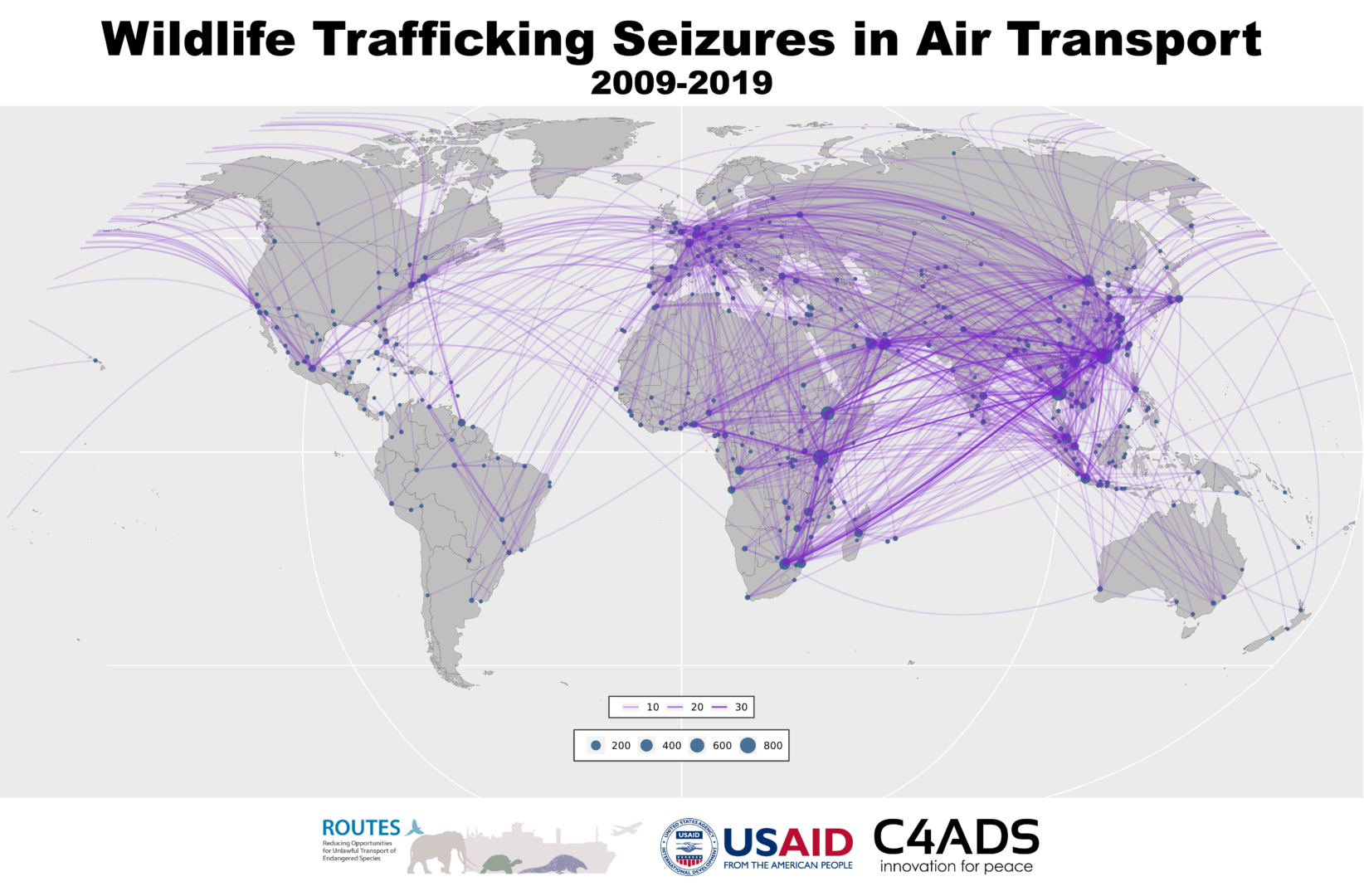
Trafficking rings change shape far more readily than they contract, but that they are under pressure to change is a sign that dog detection is making a dent: the many channels of communication in the underworld are delivering the message of more successful stings loud and clear, and making syndicate life measurably harder. Inevitably, preferring to conduct business as usual unhindered, in response their games will likely change in an attempt to evade capture. This does not mean defeat for the canine unit. On the contrary, it motivates tactical changes in how the dogs are trained in order to keep up with new criminal strategies. When a new form of concealment evolves, lessons are quickly learnt by the K9 Unit and their detection capabilities updated and upgraded accordingly. The dogs have their paws firmly on the pulse.
Interventions, from intelligence-gathering to boots and dogs on the ground, must be designed to target every link in these chains to dismantle them piece by piece, from poacher to kingpin. The newly-imprisoned woman was an operative working in between the two: an integral ‘facilitator’, enabling the movement of illicit goods through countries and across borders. Much more so than arresting a poacher or street-pusher, her airport bust and 16-year sentence is sending an unambiguous message to the syndicate(s) she was working for: with every item of contraband found, secured and prosecuted, a wildlife criminal is being taken out of the system.
As the smuggler, the Vietnamese national is a higher profile offender than a poacher – and harder to replace in the greater network than the person who killed the animals. Removing her from the trafficking hierarchy represents a crucial step closer to higher-level criminals, and to fewer illegal wildlife products reaching the market, helping to secure the future of many endangered species.
Countering crime beyond borders
Peace Parks Foundation focuses on conservation at scale by working in transboundary conservation landscapes. By operating beyond borders, we draw on strength through collaboration and investing in highly specialist within Peace Parks and its partners.
In addition to sponsoring and capacitating ANAC’s canine force, Peace Parks is continually fortifying its Combatting Wildlife Crime Programme. A key focus is to develop and support initiatives that boost the protection of at-risk wildlife and increase the risk to criminals of engaging in wildlife crime, enhancing traditional anti-poaching measures.
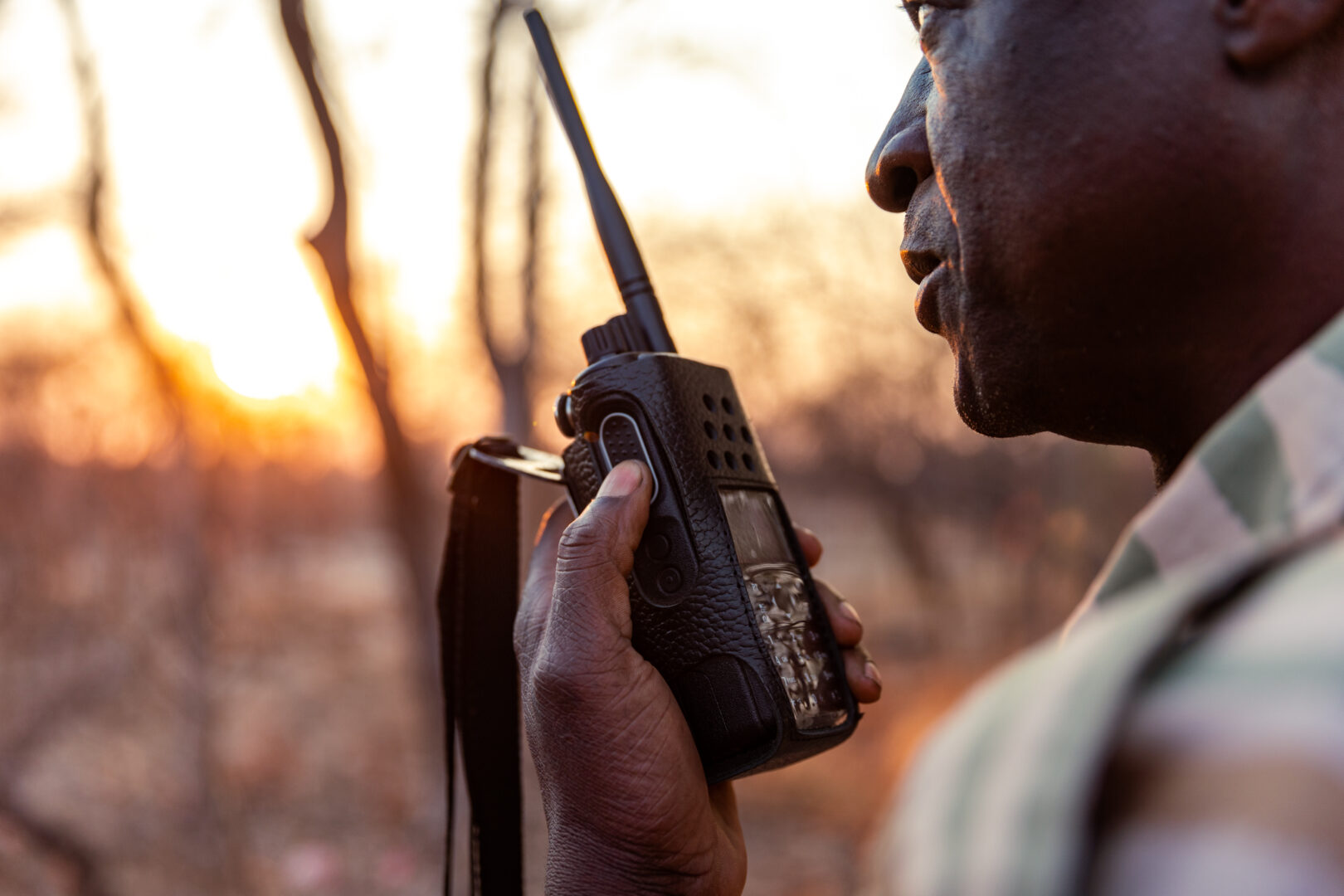
By building and applying an ever-deeper understanding of wildlife crime and fostering cooperation across agencies and borders, responses to emerging threats can be more strategic, and more successful at disrupting and preventing trafficking. For Peace Parks every joint effort invested, and supported is a vital contribution to removing the daily and mounting threats to wildlife. Every single individual removed from the world of wildlife crime is something to celebrate.
A special thanks to the Dutch Postcode Lottery and The Bureau of International Narcotics and Law Enforcement Affairs (INL)for extending their dedicated funding support to Peace Parks Foundation’s Combatting Wildlife Crime projects.

